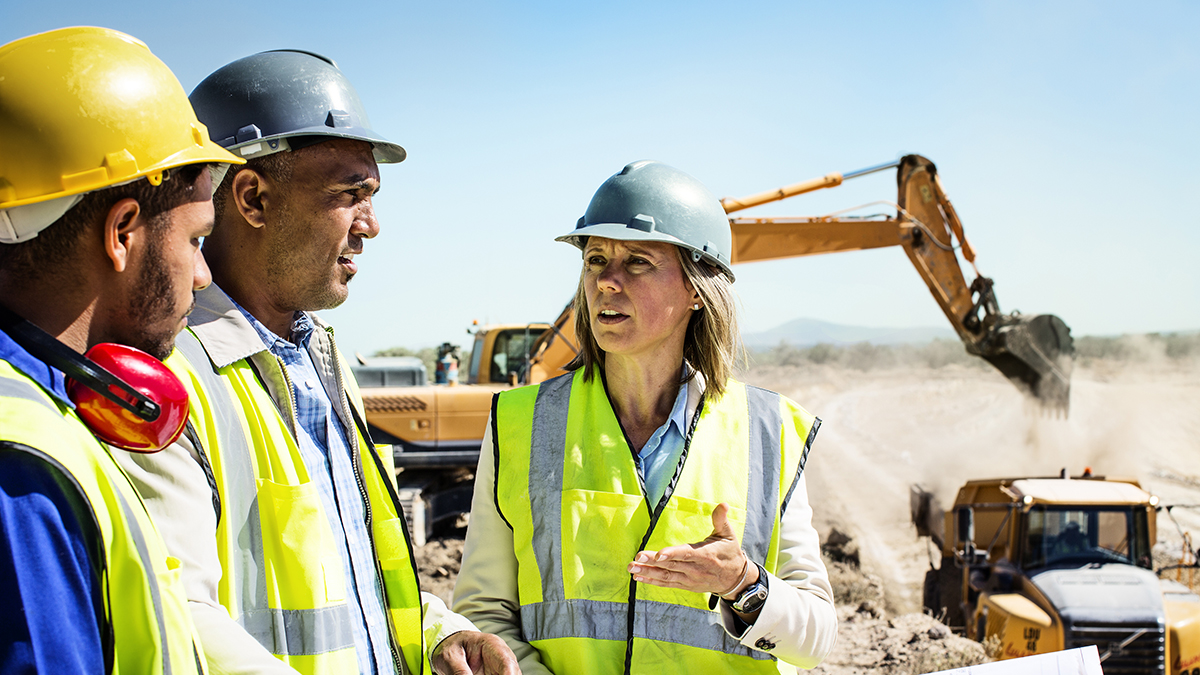Safety Measures in Handling Heavy Equipment: Crucial Practices & Guidelines
Explore extensive guidelines and best practices in handling heavy equipment for maximum safety. Enhance your knowledge of crucial safety measures.

Operating heavy equipment is no mean feat. The task not only involves commanding mammoth machines that weigh tons, but also enforcing stringent safety measures to ensure everyone's wellbeing.
Table of Contents
- Grasping the Gravity of Equipment Safety
- Essential Heavy Equipment Safety Prerequisites
- Safeguarding Against Heavy Machinery Hazards
- Highlighting Machinery Maintenance and Safety Linkage
- Emphasizing Equipment Operator Training Importance
- Thriving in an Informed Safety Conscious Environment
Grasping the Gravity of Equipment Safety
Heavy equipment - its sheer size, complexity, and capabilities - demands utmost respect and careful handling. Overlooking safety protocols can have dire consequences. In fact, the Bureau of Labor Statistics reports heavy machinery as a significant factor in fatalities across the construction industry.
Therefore, an understanding of the intrinsic link between heavy equipment operations and workplace safety is not just essential. It's a lifesaver.
Essential Heavy Equipment Safety Prerequisites

While the specifics of safety procedures may vary across workplaces and equipment types, some key components are universal to all heavy machinery operations.
- Personal Protective Equipment (PPE): No operator should handle heavy equipment without the necessary protection. Common PPE includes hard hats, safety glasses, ear plugs, and steel-toed boots.
- Inspections: Daily safety and functional checks are non-negotiable. Every piece of machinery must go through a thorough inspection before commencing work.
- Operational Limitations: Knowing the limits of your machinery and working well within them is an essential practice to prevent accidents.
Safeguarding Against Heavy Machinery Hazards
Safety is undeniably a prime concern when dealing with heavy machinery. Nonetheless, without efficient and proactive hazard management, implementing safety measures can be cumbersome.
The first line of defense against heavy machinery hazards is the identification and evaluation of risks. Factors to consider include falling objects, vehicle collisions, electrocution and entanglement hazards.
Post identification, the next stage involves mitigating the risks. For instance, preventive strategies like using safety belts and harnesses, barricade protection, or employing spotters can minimize the likelihood of accidents occurring.
Highlighting Machinery Maintenance and Safety Linkage
Maintenance isn't just about extending the life of your equipment or ensuring its optimal operation. Ironically, it's also about "upkeep" of human life. Poorly serviced machinery increases the chances of workplace incidents, laden with high costs and catastrophic outcomes.
(For instance, loose parts or malfunctions can turn a smooth operation into a dangerous one. Thus, a regular service schedule, immediate resolution of noticed issues, and complete assurance of the equipment's health are non-negotiable safety prerequisites.)
Emphasizing Equipment Operator Training Importance

Empowering operators with the right knowledge stands at the core of safety. Handing over powerful machinery to the unskilled can be a ticking time bomb. Thus, operator training for heavy equipment is not just beneficial—it's indispensable.
Undergoing a thorough training program ensures the operator is familiarized with the machinery's controls, functionalities, as well as its handling nuances. Furthermore, operators should also be trained on safety procedures, first aid provision and emergency management.
Such training mitigates risks and cultivates a safety-oriented mindset amongst your workforce, contributing to a secure work environment.
Thriving in an Informed Safety Conscious Environment
Equipment safety doesn't stop with maintenance and training. It extends to creating an environment where safety is engrained, not enforced. A strong safety culture starts with leadership and filters down to every employee on the floor.
Emphasize the adoption of strict safety norms and encourage open communication about potential hazards and risks. Employees should feel comfortable discussing safety issues and suggesting improvements. A "Safety First" policy, regular safety meetings, and ongoing safety training sessions play pivotal roles in creating such an environment.
Remember, the best defense against safety hazards in handling heavy equipment is an informed and proactive approach. From the right protective gear to strong safety norms, every measure counts in the pursuit of a secure and productive work environment.
Finally, remember that while we draft and propose these safety guidelines, the stakeholders of the heavy equipment industry play a crucial role in their effective implementation. It is the collective responsibility of manufacturers, dealers, and operators to ensure a safe and healthy work environment. This mindset not only boosts morale and productivity but also reiterates the industry's commitment to its biggest asset - its people.
What's Your Reaction?










































































